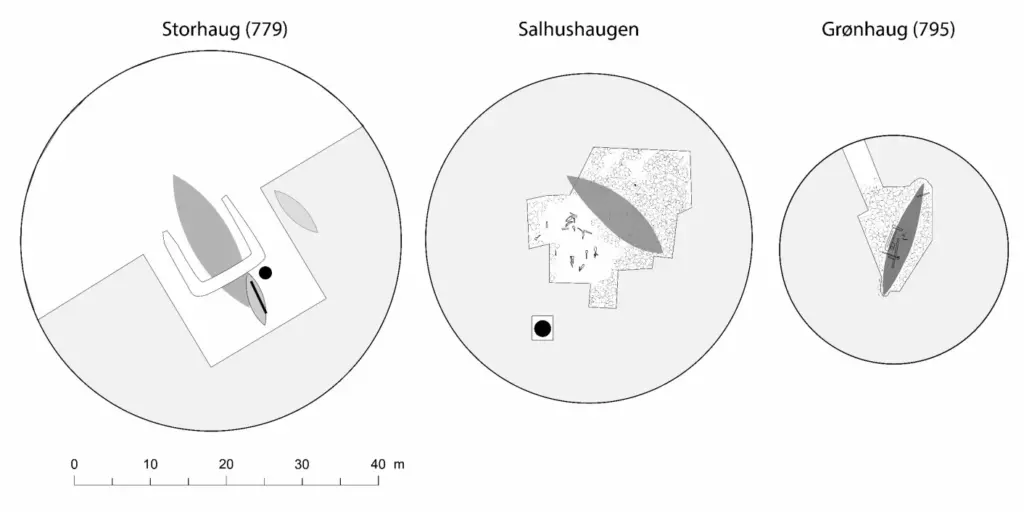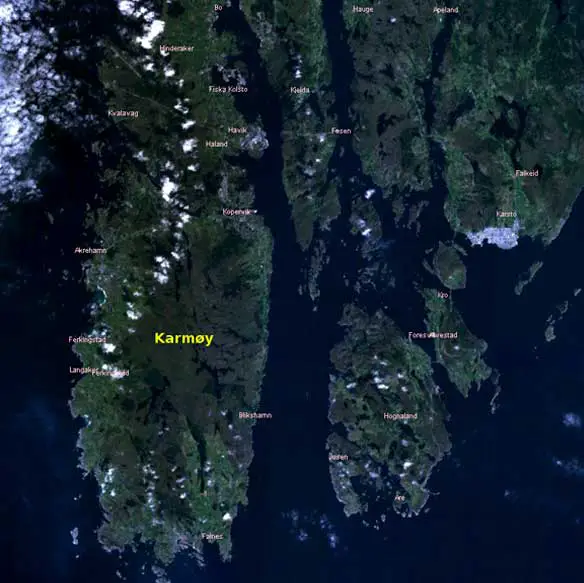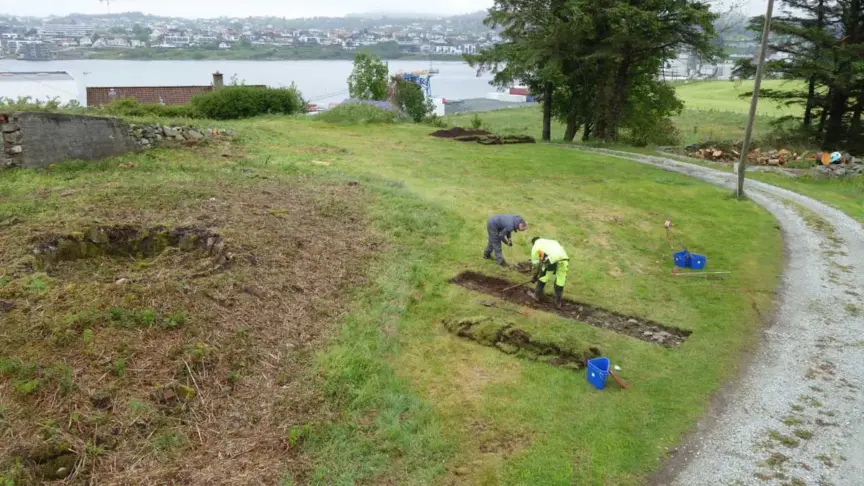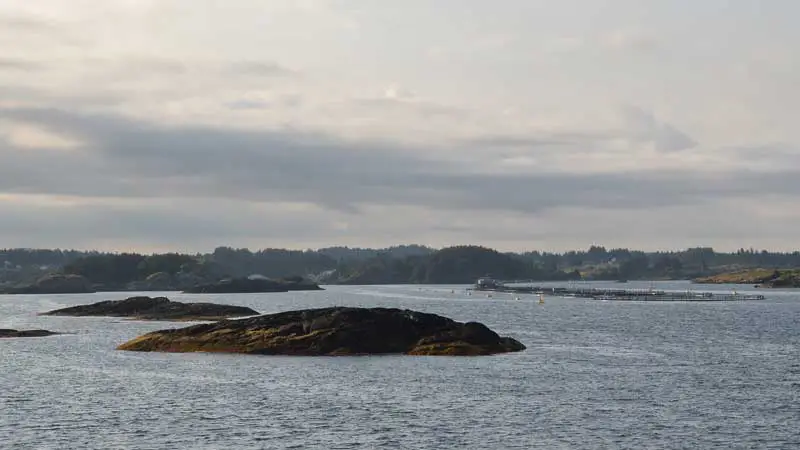In the picturesque landscape of Karmøy, a Norwegian island steeped in history, a series of groundbreaking discoveries have sparked renewed interest in the lives and times of the early Viking kings. At the heart of this captivating investigation is the Storhaug burial mound in Torvastad, which has been the subject of extensive research led by Håkon Reiersen, an associate professor at the Archaeological Museum, University of Stavanger. The findings on Karmøy have provided a window into a world that has remained hidden for centuries, inviting us to embark on a journey back in time to uncover the secrets of this ancient civilization.
The Storhaug Ship: A Maritime Marvel
The discovery of a ship dating back to around 770 AD at Storhaug has taken the world of archaeology by storm. This ship, believed to be about 50 years older than the renowned Oseberg ship, has the potential to reshape our understanding of Viking maritime activities, trade, and warfare. The ship’s age and the recent realization that it may have been a sailing ship rather than a rowing ship, as previously believed, have opened up new avenues for researchers to explore.
The Storhaug ship’s dimensions are impressive, measuring approximately 20 meters in length and 5 meters in width. Its construction, which involved the use of large oak timbers and intricate wood carving techniques, reflects a mastery of shipbuilding that enabled the Vikings to traverse vast expanses of water and establish a far-reaching maritime empire. Radiocarbon dating, dendrochronology, and other scientific methods have been employed to establish the age and origin of the ship, as well as to study the ship’s construction techniques.

The Storhaug ship’s discovery was soon followed by the uncovering of two more ship burials in the area, further strengthening the theory of a kingdom ruled from Avaldsnes before Harald Fairhair unified Norway. These discoveries, made possible by cutting-edge georadar technology, have put Karmøy at the center of attention, showcasing the highest concentration of ship burials geographically – a unique feat unmatched elsewhere.
Maktens Havn Project: Power’s Harbor and the Early Viking Kings
The ongoing “Maktens Havn” (Power’s Harbor) project, which started in 2019, has been focusing on the harbor areas around Avaldsnes, a power center during the Viking Age. The project has already made significant discoveries, such as the unlooted Storhaug mound, where valuable artifacts like a gold arm ring and a set of game pieces made of glass and amber were unearthed. These findings offer a unique window into the social, cultural, and economic aspects of the Viking Age, painting a vivid picture of the people who shaped this fascinating period in history.

In addition to the ship burials, evidence of a bustling harbor and a thriving trade network has been uncovered at Avaldsnes. The harbor would have been a hub of activity, with ships arriving from far and wide, laden with goods and treasures.
Through trade and conquest, the early Viking kings would have amassed a wealth of resources, enabling them to build their kingdom and assert their dominance over the surrounding lands.
The Karmøy discoveries have not only captivated historians and archaeologists but also piqued the interest of the general public, leading to a greater appreciation of Norway’s rich cultural heritage. This heightened awareness may inspire future generations of historians and archaeologists to continue uncovering the hidden treasures that lie beneath the surface, helping to preserve and share the stories of the early Viking kings who ruled from this strategic location.
Insights into Viking Culture, Religion, and Society
An essential aspect of Viking culture was their religious beliefs, which were deeply intertwined with their daily lives. The early Viking kings would have paid homage to a pantheon of gods, led by the mighty Odin, the god of war and wisdom. As researchers continue to excavate the ship burials at Karmøy, they may uncover more artifacts that provide insights into the religious practices and belief systems of these early Viking kings, allowing us to better comprehend their motivations and worldview.
The social hierarchies of the early Viking kings are also revealed through the Karmøy discoveries. Intricate grave goods and the arrangement of burial sites point to the existence of a complex class system within Viking society, with the elite enjoying significant wealth, power, and influence. The gold arm ring and game pieces made of glass and amber found at Storhaug are examples of the high-status items owned by the upper echelons of Viking society.
Moreover, the Karmøy excavations have shed light on the everyday lives of the Vikings. Evidence of farming, fishing, and metalworking has been found, showcasing the diverse range of skills and occupations that sustained the Viking community. Understanding these aspects of Viking life helps paint a more comprehensive picture of the social, economic, and cultural forces that shaped the Viking Age.
The Legacy of the Karmøy Discoveries
The new insights gained from the Karmøy discoveries have generated increased public interest in Viking history, leading to a greater appreciation of Norway’s rich cultural heritage. This heightened awareness may inspire future generations of historians and archaeologists to continue uncovering the hidden treasures that lie beneath the surface, helping to preserve and share the stories of the early Viking kings who ruled from this strategic location.
While Karmøy’s story is still being uncovered, it is clear that the island played a crucial role in the Viking Age, serving as a gateway for trade, exploration, and expansion. The wealth of knowledge gained from these excavations not only deepens our understanding of the Vikings but also provides valuable lessons about the power of human ingenuity, perseverance, and the importance of preserving our cultural heritage.
In conclusion, the discoveries on Karmøy are a testament to the importance of ongoing archaeological research, using cutting-edge technology to unlock the secrets of the past. As more information is uncovered, we can look forward to a deeper and more nuanced understanding of the Viking Age and the people who shaped it. The Storhaug ship and the surrounding burial sites serve as a fascinating reminder of the power, influence, and remarkable craftsmanship of the early Viking kings.
As we delve into the world of Karmøy and its buried treasures, we embark on a fascinating journey of discovery that leads us to reflect on our history and the complex tapestry of human civilizations that have come before us. By piecing together the clues left behind by the early Viking kings, we not only gain valuable insights into their lives and times but also deepen our connection to a shared past that continues to shape our present and future.
With every new artifact unearthed, we come closer to understanding the enigmatic world of the early Viking kings and the factors that contributed to their rise and eventual decline. As we uncover the mysteries of Karmøy and the Viking Age, we are reminded of the power of exploration, the resilience of the human spirit, and the indelible mark that each generation leaves on the sands of time.

